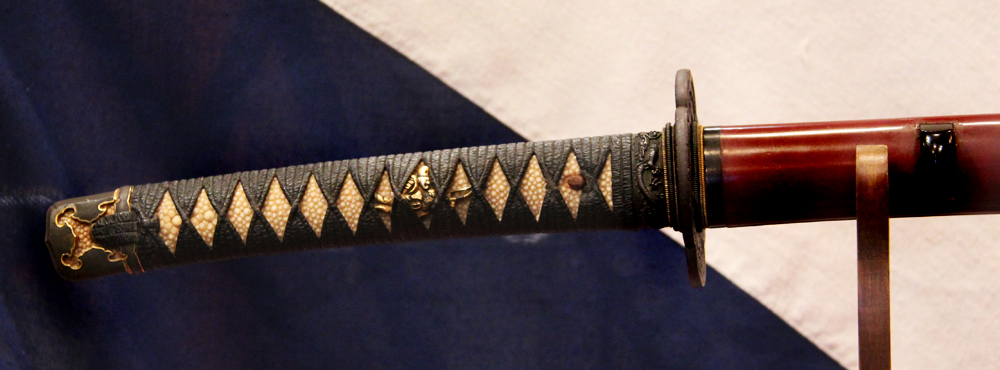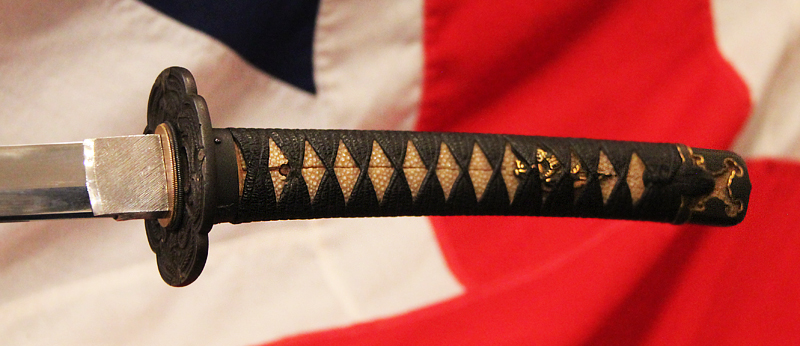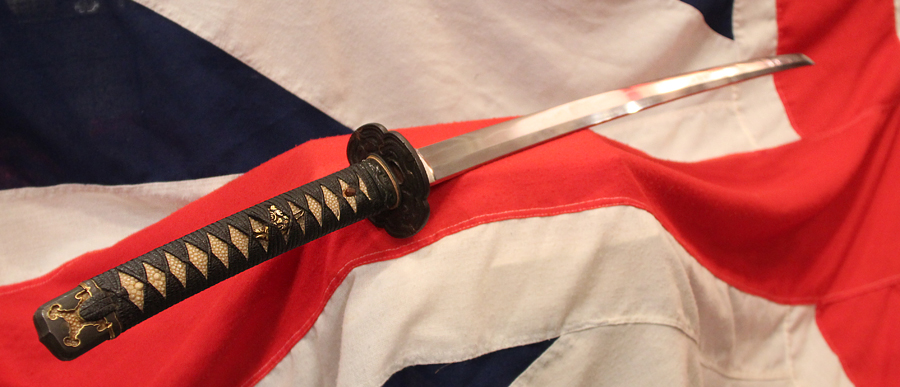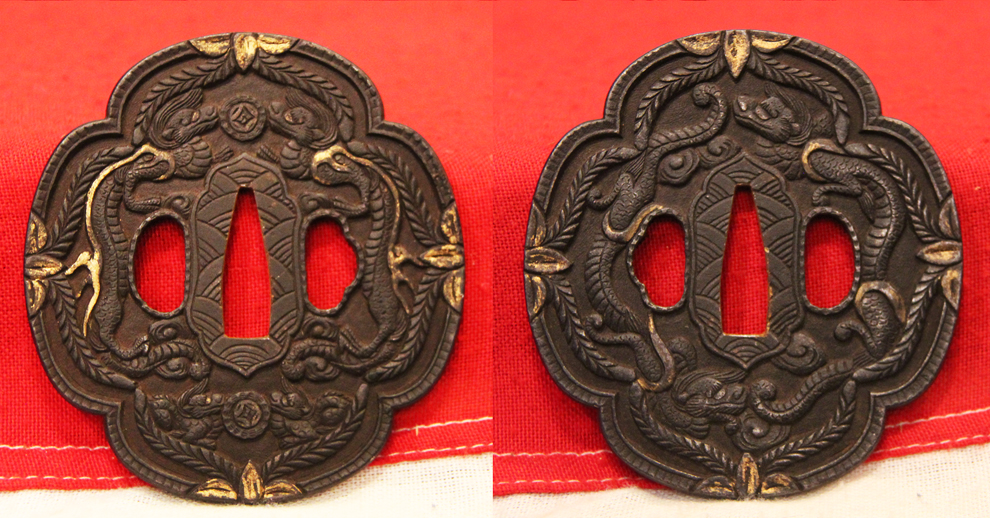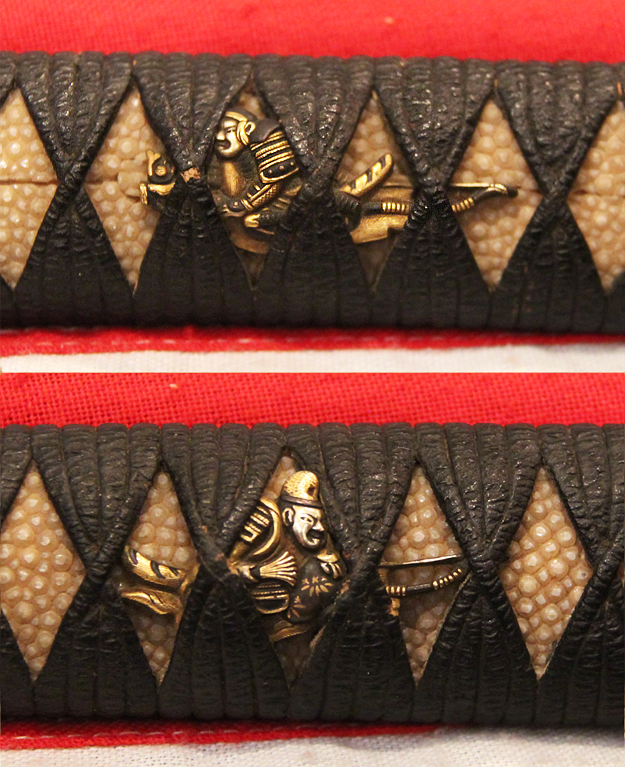A Simply Wonderful 16th Century Koto Era Katana, Museum Quality Mounting, With Shakudo & Pure Gold Decorated Menuki of Takeda Shingen in Armour With His Tiger’s Tail Saya Mounted Sword & War Bow
Circa 1580. All original Edo period koshirae fittings and beautiful original Edo cinnabar urushi lacquer saya. The wrap is original Edo lacquered tooled leather over two wonderful pure gold decorated menuki of two armoured menuki, they are likely Takeda Shingen with his distinctive swords saya Mede from a tiger’s tail, and he wears a court cap helmet. The tsuba is a very fine nanban lobed mokko gata tsuba of wonderful dragon form also decorated with gold. The kashira is a kubutogane type, is a pure gold decorated shakudo, and the the fuchi has a takebori superb quality dragon, on a nanako ground.
Nanako Ji: "fish roe ground" A surface decoration produced by forming very small raised bosses by a sharply struck punch or burin called 'nanako tagane'. Shakudo is the metal most often used, but copper and gold are quite often employed. The harder metals, shibuichi, silver and iron are rarely decorated in this way. The size of the dots vary from 0.04" to 0.008" (25 to 125 and inch) and the regularity of the work is marvelous as the dots must be spaced entirely by touch. The dots are usually arranged in straight lines or in lines parallel to the edge of the piece being decorated, but sometimes in more elaborate patterns. Used on guards since the Momoyama period although the technique existed since much earlier periods. Usually done by specialist 'nanako-shi', but sometimes done by the maker of the guard himself.
The blade has a joyful and elaborate gunome hamon and a hammered silver over copper habaki. The saya is in bulls blood red urushi lacquer, with polished buffalo horn fittings
The first mention of the word "katana" occurred during Japan's Kamakura Period (1185 to 1333). Back then, the word was used to describe a long sword with similar characteristics as the tachi but with a few nuances. The katana, for instance, generally had a longer, more curved blade than its tachi counterpart. Most importantly, however, the katana was stronger and more powerful than the tachi. The Kamakura and Muromachi periods
These two periods are considered as the most important periods of the Samurai sword's development history. Though the exact time frames for these periods is debated the period from 1185 to 1336 was known as the Kamakura while the period from 1337 to 1573 was referred to as the Muromachi period. During these periods, there were many invasions in Japan. As a result, there was need for an effective sword to fend off invaders successfully.
During battle the Japanese warriors found that it was very difficult to draw the old ken straight sword from the scabbard (saya) while fighting on a horseback. Consequently, during the Muromachi period, smiths developed the curved katana sword which was more functional during horseback fighting. Because of the design and effective cutting angles, a Samurai could easily draw their sword from the scabbard and slash their opponents in a single swing. 27.5 inch blade from tsuba to tip.
Code: 21721
8750.00 GBP



